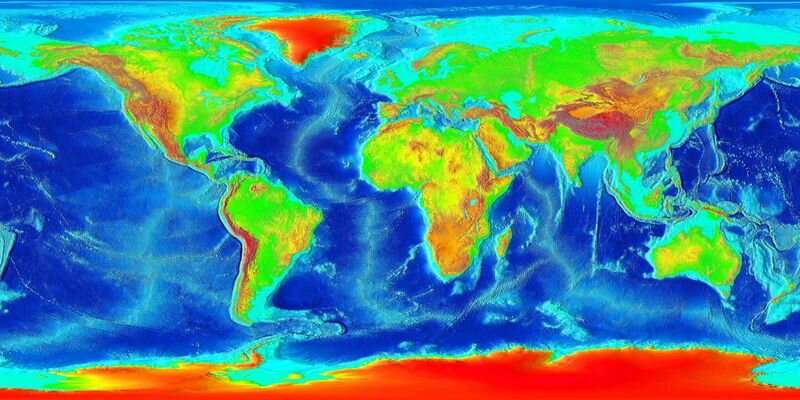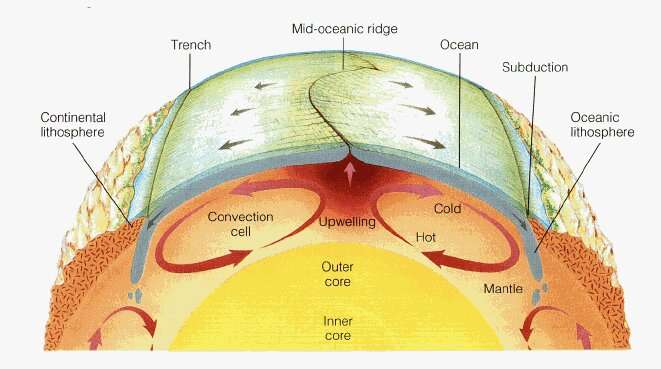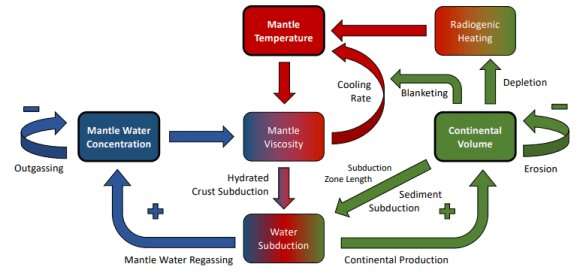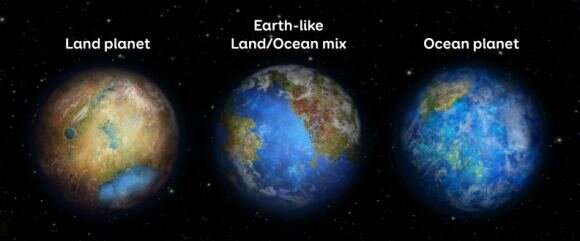What's the best mix of oceans to land for a habitable planet?

Earth is about 29% land and 71% oceans. How significant is that mix for habitability? What does it tell us about exoplanet habitability?
There are very few places on Earth where life doesn't have a foothold. Multiple factors contribute to our planet's overall habitability: abundant liquid water, plate tectonics, bulk composition, proximity to the sun, the magnetosphere, etc.
What role does the ratio of oceans to land play?
Our understanding of habitability is pretty crude at this point, though it is based on evidence. We rely on the habitable zone around stars to locate potentially habitable exoplanets. It's a factor that's easy to ascertain from a great distance and is based on the potential for liquid water on planets.
We're still drawing a bigger, more detailed picture of habitability, and we know that things like plate tectonics, bulk composition, a magnetosphere, atmospheric composition and pressure, and other factors play a role in habitability. But what about a planet's ratio of oceans to land?
A new study examines that ratio in detail. The paper's been submitted to the journal Astrobiology and is available on the preprint site arXiv. It hasn't been peer reviewed yet.
The authors are Dennis Höning and Tilman Spohn. Höning is from the Potsdam Institute for Climate Impact Research in Germany, where he focuses on the interface between planetary physics and Earth System sciences. Spohn is the Executive Director of the International Space Science Institute in Bern, Switzerland. Spohn was also the principal investigator for the InSight lander's "mole" instrument, the Heat Flow and Physical Properties Package (HP3.)

Plate tectonics and related factors are at the root of the issue. Plate tectonics is the movement of the continental plates on the surface of the Earth as they ride along on top of the mantle. Plate tectonics is still an active area of research, and even with all we've learned, there's still a lot that scientists don't know.
One of the critical factors in plate tectonics is the "conveyor belt" principle. It says that as plates are subducted back into the mantle at converging plate boundaries, new oceanic crust is created at divergent boundaries, called sea-floor spreading. The result is that Earth's land-to-ocean ratio remains consistent.
With that ratio staying consistent, other factors remain consistent, too. And if those factors encourage the biosphere, that's good for habitability. One of those things is nutrients.
Exposed land is subject to weathering, which moves nutrients around the globe. Earth's continental shelves are biologically rich areas. One reason is that all the nutrient run-off from the continents ends up on the shelves. So the continents and their shelves contain most of Earth's biomass, while there's much less in the deep ocean.
Heat is another factor in plate tectonics and habitability. The continents act as a blanket over the mantle, helping Earth retain warmth. But that blanket effect is moderated by the depletion of radioactive elements in the mantle. Radioactive decay of elements like uranium in the mantle creates heat that's trapped by the continents' blanket effect. At the same time, crust renewal through tectonics brings more of these elements to the crust, where their heat is more efficiently shed.
Earth's carbon cycle is critical to sustaining life, too. That cycle is affected by plate tectonics and also by the land-to-ocean ratio. The weathering of continents removes carbon from the atmosphere roughly in equilibrium with the carbon emitted from the mantle by volcanoes.
Then there's the water content in the mantle. More water in the mantle lowers the mantle's viscosity, defined as resistance to flow. Mantle water content is part of a feedback loop with mantle temperature. As more water enters the mantle, it flows more easily. That increases convection, which releases more heat from the mantle.

As the paper explains, all of these factors are related, usually in feedback loops.
All of these factors and others combine on Earth to create robust habitability. If Earth's ratio of land to water were biased toward more land, then the climate would be much dryer, and large portions of the continents could be cold, dry deserts, and the biosphere might not be large enough to produce an oxygen-rich atmosphere.
Conversely, if there was much more water, there may be a lack of nutrients from continental weathering. That lack of nutrients also prohibits a large enough biosphere needed to produce the oxygen-rich atmosphere necessary for complex life and a richer biosphere.
There's an extraordinary amount of detail in Earth's tectonics, and it's impossible to model it all. Especially since scientists haven't reached a consensus on many of the details. Much of it's hidden from researchers. They don't have enough evidence to make solid conclusions yet.
This study relied on scientific modeling to understand how planets have different land-to-ocean ratios. Höning and Spohn modeled the three main processes that create the land-to-ocean ratio: growth of continental crust, exchange of water between the reservoirs on and above the surface (oceans, atmosphere) and in the mantle, and cooling by mantle convection.
From the paper:
"These processes are linked through mantle convection and plate tectonics with:

- subduction zone-related melting and volcanism, and continental erosion governing the growth of the continents
- mantle water degassing through volcanism and regassing through subduction governing the water budget
- heat transfer through mantle convection governing the thermal evolution."
The authors reached one foundational conclusion. "… the spread of continental coverage on Earth-like planets is determined by the respective strengths of positive and negative feedback in continental growth and by the relationship between thermal blanketing and depletion of radioactive isotopes upon the growth of the continental crust," they write. "Uncertainty in these parameter values represents the main uncertainty in the model."
These feedback loops will be present on any planet with tectonic activity and water. The relative strength of these loops is hard to quantify. There are likely a bewildering number of factors at play throughout the exoplanet population.
No researchers can model every single factor, but this research comes down to the feedback loops between all the factors and whether they're positive or negative. Strong negative feedback "…would lead to an evolution largely independent of the starting conditions and the early history of the planet, which would imply a single stable present-day value of the continental surface area," they conclude.
Strong positive feedback loops create different results, though. "For strong positive feedback, however, the outcome of the evolution may be quite different depending on starting conditions and the early history," they write.
The question is, do these same feedback loops shape exoplanets? Can exoplanets with plate tectonics also reach an equilibrium between land and ocean coverage? Will a planet roughly Earth-sized and with a similar heat budget end up similar to Earth, with its life-enabling stability?
First of all, the research shows that land planets and ocean planets are both possible, which shouldn't come as a surprise. And, of course, we know that mixed planets like Earth are possible.
In a previous paper in Physics of the Earth and Planetary Interiors, the same pair of authors concluded that land planets are the most likely outcome. The next most likely outcome is ocean planets.
The authors point out that there are uncertainties in all of this work, of course, and that there's a lack of data. Still, their work sheds light on the mechanisms that create different ratios of land to ocean on planets. "Our discussion aims to provide a better qualitative understanding of the feedback processes; we admit to lacking data for a detailed understanding of quantitative differences," they write.
Other researchers have tackled this issue, too. A 2015 study looked at planets around M-dwarfs, the most common type of star in the Milky Way, and where we're likely to find the most exoplanets. That study found "… a similar bimodal distribution of emerged land area, with the most planets either having their surface entirely covered with water or with significantly less surface water than Earth," the authors write. That study, however, looked at other factors and wasn't focused solely on continental growth.
What does this study mean for Earth? How can we answer the question in the headline: "What's the Best Mix of Oceans to Land for a Habitable Planet?"
As anthropocentric or terracentric as it might sound, we could be living on the answer.
More information: Dennis Höning et al, Land Fraction Diversity on Earth-like Planets and Implications for their Habitability, arXiv (2022). DOI: 10.48550/arxiv.2211.09473
Dennis Höning et al, Continental growth and mantle hydration as intertwined feedback cycles in the thermal evolution of Earth, Physics of the Earth and Planetary Interiors (2016). DOI: 10.1016/j.pepi.2016.03.010
Journal information: Astrobiology , arXiv
Provided by Universe Today





















